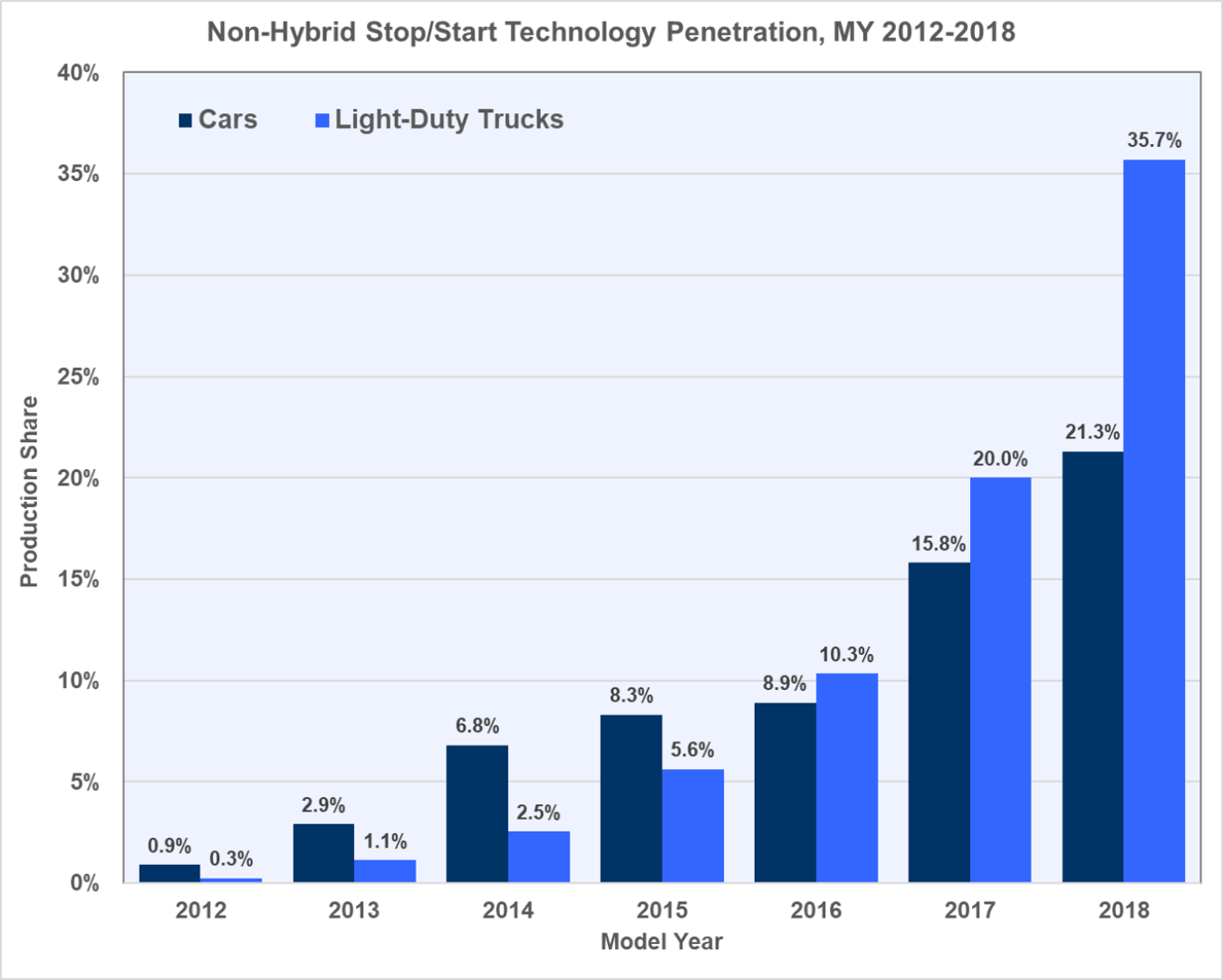Stop/start systems are designed to conserve fuel by reducing idle time when a vehicle is stopped.
June 24, 2019Stop/start systems are designed to conserve fuel by reducing idle time when a vehicle is stopped. In city driving, where traffic lights are frequent, the stop/start system will shut down the engine as the vehicle comes to a stop and will automatically restart the engine when the brake pedal is released. Hybrid vehicles have always done this but, in recent years, manufacturers have been installing stop/start systems on greater numbers of non-hybrid vehicles as well. In 2012, less than one percent of all cars and light-duty trucks were produced with a non-hybrid stop/start system. Through 2015, cars had the greatest share of stop/start systems installed. After 2015, the greatest share of start/stop systems was installed on light-duty trucks, rising to 35.7% of all light-duty trucks produced in model year (MY) 2018.

Notes: Data for 2018 are preliminary. The car category includes cars and car sport-utility vehicles. The light-duty truck category includes pickups, vans, and truck sport utility vehicles.
Source: U.S. Environmental Protection Agency, The 2018 EPA Automotive Trends Report: Greenhouse Gas Emissions, Fuel Economy, and Technology since 1975, EPA-420-R-19-002, March 2019.

